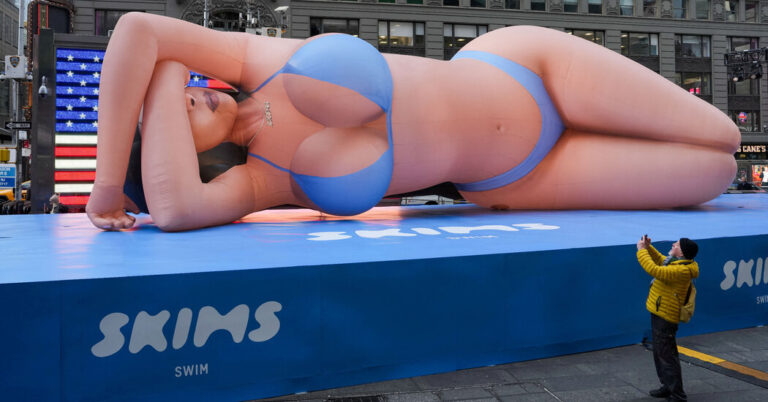When Amber Glenn was named the top U.S. women’s figure skater for a second consecutive year in January, she collapsed in tears, releasing mountains of pressure that had been weighing on her chiseled shoulders.
This week, she is aiming to add another gold medal to her pile at the World Figure Skating Championships in Boston. If she pulls it off, Ms. Glenn would finish her season an undefeated champion and become the first American figure skater to claim the women’s World Championship title in almost 20 years.
It would be Ms. Glenn’s biggest win yet, but only the latest in a series of firsts for a woman who has landed the triple axel jump in all of her competitions this season – one that, for Ms. Glenn, has been filled with triumph and tragedy after a plane crash in January killed 11 figure skaters, some of whom she had shared the ice with just days before they died.
If Ms. Glenn wins or even medals at Worlds, she will be the first openly L.G.B.T.Q. woman to do so in a sport whose female athletes largely tend to mold their likenesses to that of a cookie-cutter ice queen.
Ms. Glenn, by contrast, has grown her profile by celebrating what makes her different. She is a pansexual figure skater who jumps with the power of a pole-vaulter, models her hairstyles off those of brassy pop stars, collects lightsabers – and is primed to be America’s next big skating star at 25, an age when most of her peers have long retired.
On a Saturday evening in February, Ms. Glenn darted around the corners of the ice rink at Chelsea Piers in Manhattan at double-digit speeds as her short-program music – “This Time” by Janet Jackson – blared from loudspeakers. She was in New York to fine-tune some of her choreography before the World Championships this month.
Ms. Glenn’s career, which began more than two decades ago at an ice rink inside a shopping mall, has not been a linear ride to the top. At 14, she became the U.S. junior women’s champion. About a year later, Ms. Glenn was hospitalized for depression and anxiety, which stopped her from skating for five months. At the time, she was also restricting her eating – consuming one or two Lean Cuisine meals a day. In more recent years, she has suffered multiple severe concussions and has been haunted by mistakes, like missed jumps, that she has attributed to anxiety. It has not helped that many of her injuries and stumbles have played out on live television.
Her winning season harks back to the time when American skaters like Dorothy Hamill and Michelle Kwan dominated the sport. As a rising star of women’s singles, figure skating’s marquee event, Ms. Glenn has created some fresh buzz in the run-up to next year’s Milan-Cortina Winter Olympics. “It’s hugely important to the success of American skating to have a star who has a chance to win” at the Olympics, Mr. Gannon said.
Her friend Gracie Gold, 29, a retired two-time national champion who has spoken about her own struggles as a skater, jokingly said that late bloomers in the sport like Ms. Glenn were “only weird to people in skating that need to go outside and touch grass.”
Skaters of Ms. Sakamoto’s and Ms. Glenn’s age have historically been rare sights atop the championship podiums in women’s figure skating, a sport in which the last three Olympic gold medalists were between the ages of 15 and 17 when they won. In the wake of a doping scandal involving a 15-year-old Russian skater that rocked the Beijing Winter Olympics in 2022, the minimum age for female skaters to compete in the games was raised to 17.
Source link




